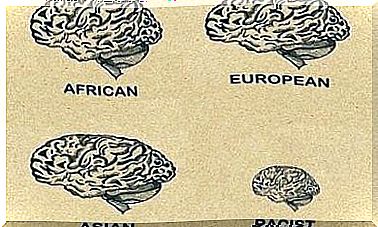The Difference Between Being Coherent And Preaching By Example

Coherence can be conceived as a personality trait, a position in relation to a particular issue or a reasoning property. Furthermore, it has been proven that aligning our vital thoughts and experiences is a positive reserve in our psychological health.
These days, we hear frequent statements from public figures about how to preach by example. Social networks have dizzily promoted the materialization or externalization of values that are essentially invisible.
However, the materialization of a morally accepted behavior can be camouflaged under a repertoire of values or other unethical behavior.
For example, donating money to classes that need it most can be a good thing. However, this donation may be questioned by some if the money was unethically earned (for example, by drug trafficking).

The importance of contextualizing
At this point, we must rephrase: what is the example? Is it something that depends on a concrete materialization, an external evaluation or a pre-established action? By having more resources to preach by example, is those who teach through them more coherent? The answer is no.
Preaching by example means “doing what you want others to do”. Words have the power of convincing, but the example has the power of truth seen and lived. Words are really powerful when based on personal examples.
For its part, the word coherence has its etymological origin in Latin, coaherentia , which means internal connection and designates the quality of what presents an internal and global connection or relationship of its different parts.
This definition highlights the internal nuance as indispensable in its conceptualization. However, “preaching by example” seems to give greater importance to the external component, which is behavior, as if it were a necessary or sufficient condition.
Thus, a behavior or a repertoire of “exemplary” behaviors does not determine coherence, since the cognitive component – such as that referring to an assumption of ethical values – is an essential condition.
Coherence can be assessed by relating our own experiences or stories to our thoughts and decisions. Due to its total or global nature, it is related to Aristotle’s phrase, later collected by Gestalt psychology: “The whole is more than the sum of the parts”.
the truth as coherence
This nuanced difference in the concept of coherence is often forgotten in everyday language, using both meanings interchangeably.
This also happened in the philosophy studies of ‘The Theory of Coherence’. According to Rescher, this theory was not, historically, a monolithic doctrine, but it took significantly different forms.
The theory of truth as coherence was studied in the famous ‘Vienna Circle’, proving to be a conventionalist approach. This theory has received much criticism for its circular thinking, questioning what it really means to be coherent.
Criticism of this theory was clarified by the German philosopher Schlick, when Otto Neurath and Carnap took possession of a neopositivist theory of truth. Furthermore, they warned that this was a circular approach and insisted on the presence of ethics in truth.
Coherence from the Psychology of Thought
Thought psychology studies valid forms of reasoning as well as the most frequent thinking fallacies. What we do when we think inductively is to believe that the truth of the premises guarantees the truth of the conclusion.
On the other hand, a fallacy also occurs when we reach a conclusion without knowing the premises, or even knowing them.
These biases in thinking can be observed in recent social phenomena, such as post-truth or populism, among others. The latter can be an example of categorical syllogistic reasoning.
In this type of reasoning, the conclusion is drawn from an inadequacy of the major premise with the minor, giving rise to fallacious thinking.
Post-truth can be seen as a kind of formal and unconditional fallacy, called the assertion of the consequent. This fallacy occurs because a second element is asserted and it is erroneously deduced that its antecedent is true.
When making any judgment, evaluation or measurement, it is worth remembering Einstein’s contribution when he referred to the existence of hidden variables.
For him, in reality, the results of measurements must be predictable, and if we cannot predict them, it is because there is information that we do not know. He called this information the “hidden variables” of reality.

coherence and health
In 1987, Antonovsky proposed the concept of sense of coherence (SOC) as a salutogenic variable, mediating health in stressful situations.
This concept has been studied as a measure of resilience and is related to self-esteem and better resistance to stress.
The positive value of coherence has been studied in a type of constructivist therapy, which is called coherence therapy. This therapy interestingly integrates what has been effective in the clinical practice of psychology, confirmed by neuroscience.
Coherence therapy achieves effective results, managing to intervene in the blocked emotional experience and integrate it into memory to become a conscious meaning. In other words, it gives back to the individual or restores their personal and global coherence.
This global character, which forms the truth of the individual’s experience, is the main characteristic of coherence. The truth serves as a guide or light for us to follow a path; sometimes obscure, sometimes clear.
Each person has different experiences and yet knows reality to some extent. So, instead of trying to follow a specific example, it is necessary to know our cornerstone, which is coherence.
Conclusion
The value of coherence, being an invisible value, seems to have gone unnoticed in recent times, or is less valued than exemplary behavior, which produces more visibility. So, even in silence, you may be more consistent than those who preach by example.
Knowing that there are more realities than we can deduce through a simple external connection allows us to get closer to the truth, developing a greater mental openness and understanding the ethical sense of coherence.









